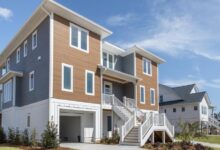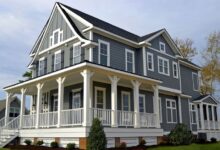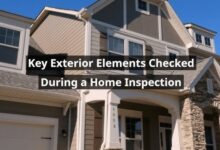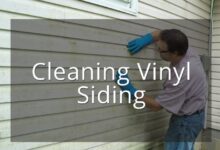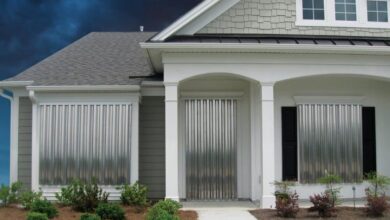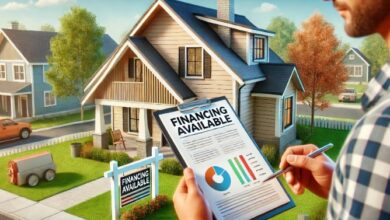Choosing the right siding for your home is crucial. It not only affects your home’s aesthetic but also its durability, energy efficiency, and long-term maintenance costs. With so many types of siding options available, making an informed decision can be overwhelming. In this article, we’ll break down everything you need to know about choosing the best siding, explore the benefits of different types, and give you top product recommendations for 2025. Let’s get started!
What is Siding and Why is It Important?
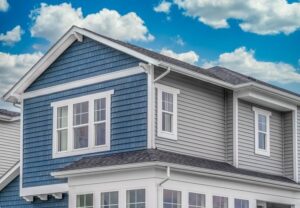
Siding refers to the material used to cover and protect the exterior walls of a building or home. It’s essentially the outer layer that shields the structure from the elements like rain, snow, wind, and extreme temperatures. Siding also plays an important role in insulation, helping to maintain the internal temperature of your home, keeping it cool in summer and warm in winter.
While siding is primarily a functional component of your home, it also has a significant impact on your home’s aesthetic appeal and overall value. The right siding not only enhances the curb appeal but can also help improve energy efficiency and reduce long-term maintenance costs.
Types of Siding Materials
There are several types of siding materials to choose from, each with its own set of benefits and drawbacks. Here’s an overview of the most popular options:
- Vinyl Siding
- Wood Siding
- Fiber Cement Siding
- Metal Siding
- Stone or Brick Veneer
Each option offers unique benefits, but choosing the right one depends on your priorities like cost, durability, maintenance, and appearance.
Benefits of Choosing the Right Siding
Selecting the right siding can improve your home’s:
- Curb Appeal: The right siding makes your home look attractive and modern, potentially increasing its market value.
- Energy Efficiency: Good siding materials, like insulated vinyl or fiber cement, help regulate your home’s temperature, saving you money on energy bills.
- Durability: High-quality siding materials protect your home against the weather, pests, and other external factors.
- Maintenance: Some siding options, like vinyl, require very little upkeep, while others, like wood, may need to be painted regularly.
- Environmental Impact: Many modern siding materials are designed to be more sustainable, helping reduce your carbon footprint.
Top 5 Siding Products to Consider in 2025
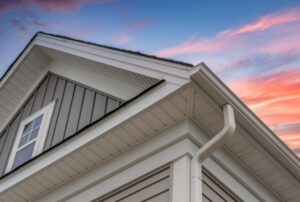
We’ve researched the best siding materials available this year and compiled a list of products that cater to various needs and budgets.
1. James Hardie Fiber Cement Siding
- Use Case: Ideal for homeowners looking for a durable and low-maintenance option.
- Pros:
- Long lifespan (up to 50 years)
- Fire-resistant
- Resistant to pests and rot
- Customizable finishes
- Cons:
- Heavier than vinyl
- Requires professional installation
- Price: Around $7 to $10 per square foot
- Features: Available in various colors and textures, weather-resistant, and energy-efficient.
2. Mastic Vinyl Siding
- Use Case: Best for homeowners on a budget seeking a low-maintenance, easy-to-install option.
- Pros:
- Affordable
- Low maintenance
- Easy to install
- Wide range of colors and styles
- Cons:
- Can be prone to cracking in extreme temperatures
- Price: Approximately $4 to $7 per square foot
- Features: High-impact, weather-resistant, and energy-efficient options.
3. LP SmartSide Engineered Wood Siding
- Use Case: Perfect for those who want the look of wood with the durability of engineered materials.
- Pros:
- Resists termites and fungal decay
- Sustainable and eco-friendly
- Less prone to warping compared to natural wood
- Cons:
- Can be pricier than vinyl
- Price: Around $5 to $8 per square foot
- Features: Available in multiple textures and finishes, environmentally friendly, and long-lasting.
4. Alcoa Metal Siding
- Use Case: Best for homeowners looking for a modern, durable, and weather-resistant option.
- Pros:
- Resistant to fire and pests
- High durability and weather resistance
- Low maintenance
- Cons:
- Can be noisy during heavy rain
- Price: Approximately $6 to $12 per square foot
- Features: Available in aluminum, steel, and insulated options.
5. CertainTeed Vinyl Siding
- Use Case: Perfect for homeowners seeking a premium vinyl option with a range of styles and colors.
- Pros:
- Great selection of colors and styles
- Energy-efficient
- Low maintenance
- Cons:
- May fade over time in extreme sunlight
- Price: Around $3 to $6 per square foot
- Features: Fade-resistant, long-lasting, and highly durable.
Comparison Table of Siding Options
| Product | Use Case | Pros | Cons | Price Range | Features |
|---|---|---|---|---|---|
| James Hardie Fiber Cement Siding | Durable, fire-resistant, eco-friendly | – Long lifespan (up to 50 years) – Fire-resistant – Pest and rot resistant – Customizable finishes |
– Heavy (may require professional installation) – Can be more expensive |
$7 to $10 per sq. ft. | – Available in a variety of textures and colors – Weather-resistant – Energy-efficient options |
| Mastic Vinyl Siding | Budget-friendly, low-maintenance | – Affordable – Low maintenance – Easy to install – Wide range of colors and styles |
– Can crack or fade in extreme temperatures – Less durable than other options |
$4 to $7 per sq. ft. | – High-impact, energy-efficient – Fade-resistant technology – Available in both traditional and modern styles |
| LP SmartSide Engineered Wood Siding | Eco-friendly, natural wood look | – Termite and decay-resistant – Sustainable material – Less prone to warping than natural wood |
– More expensive than vinyl – Needs regular upkeep (painting) |
$5 to $8 per sq. ft. | – Comes in multiple textures – Eco-friendly – Termite-resistant and weatherproof |
| Alcoa Metal Siding | Modern, weather-resistant | – Fire-resistant – Durable, withstands extreme weather – Low maintenance |
– Can be noisy in heavy rain – Prone to dents and scratches if not high quality |
$6 to $12 per sq. ft. | – Available in aluminum, steel, and insulated options – High durability – Low-maintenance |
| CertainTeed Vinyl Siding | Premium vinyl, wide range of styles | – Excellent energy efficiency – Fade-resistant – Low maintenance – Wide range of colors and finishes |
– May fade in extreme sunlight – Prone to cracking in cold weather |
$3 to $6 per sq. ft. | – Available in various styles, including traditional and modern – High energy efficiency – Low maintenance |
Summary of Key Considerations
- Durability: James Hardie Fiber Cement and Alcoa Metal Siding are the top contenders for long-lasting durability, with resistance to fire, rot, and extreme weather.
- Cost: If you’re on a budget, Mastic Vinyl and CertainTeed Vinyl offer cost-effective options without sacrificing too much in terms of performance.
- Aesthetic Appeal: For homeowners who want the look of natural wood, LP SmartSide Engineered Wood is an ideal choice, combining the beauty of wood with the durability of engineered materials.
- Maintenance: Mastic Vinyl and CertainTeed Vinyl require minimal maintenance, while LP SmartSide and James Hardie may need occasional care to ensure longevity.
Benefits of Choosing These Products for Your Home

- James Hardie Fiber Cement: A durable choice for those prioritizing fire resistance, weather resilience, and long-lasting performance. This product is ideal for areas with extreme climates and requires less frequent maintenance.
- Mastic Vinyl: A budget-friendly option with minimal upkeep. Perfect for homeowners who want a cost-effective siding solution without compromising on style and functionality.
- LP SmartSide Engineered Wood: A fantastic choice for those who love the natural beauty of wood but want a more durable and eco-friendly option. It’s perfect for those in humid or termite-prone areas.
- Alcoa Metal Siding: If you’re looking for a sleek, modern aesthetic and require something low-maintenance and highly durable, Alcoa’s metal siding is a solid choice.
- CertainTeed Vinyl: Offers a premium finish with great energy efficiency and low maintenance. It’s perfect for homeowners who want a variety of style options at a reasonable price.
How to Buy and Where to Buy
To purchase the siding of your choice, you can visit the official websites of the manufacturers, or check out reliable home improvement stores like Home Depot and Lowe’s. Many of these products are also available for purchase online via third-party retailers like Amazon, Wayfair, or BuildDirect.
Here are some links to buy the products:
- James Hardie Fiber Cement Siding
- Mastic Vinyl Siding
- LP SmartSide Engineered Wood Siding
- Alcoa Metal Siding
- CertainTeed Vinyl Siding
You can often find promotions or bulk discounts through these sites, especially during home improvement sales events. Be sure to read reviews and request samples if you’re unsure about color or texture!
FAQs
- What is the best siding material for cold climates?
Fiber cement and insulated vinyl are ideal for colder climates because they offer superior insulation and weather resistance. - Is vinyl siding easy to install?
Yes, vinyl siding is one of the easiest materials to install, especially for DIY projects. However, professional installation is recommended for the best results. - How long does fiber cement siding last?
Fiber cement siding can last up to 50 years with proper maintenance. - What is the most affordable siding option?
Vinyl siding is typically the most affordable, followed by engineered wood. - How often should I maintain my siding?
Vinyl siding requires little maintenance, while wood siding may need to be painted every 3-5 years to prevent decay.
Conclusion
Choosing the right siding for your home is a significant decision. Whether you’re looking for something budget-friendly, durable, or energy-efficient, the options above cover a range of needs and preferences.
Do thorough research, consider your climate, and think about your long-term goals before making a final choice. By investing in the right siding, you’re not only enhancing your home’s appearance but also ensuring it stays protected and energy-efficient for years to come.
